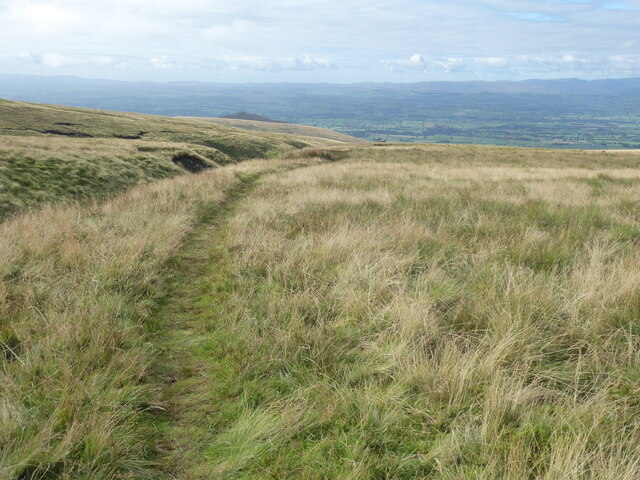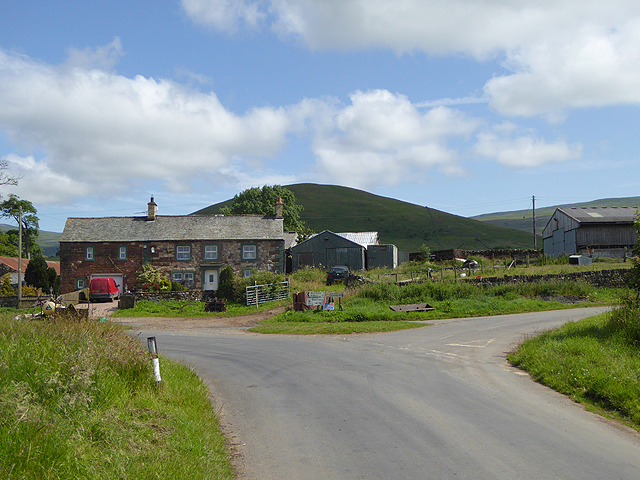Brownber Hill
Hill, Mountain in Westmorland Eden
England
Brownber Hill

Brownber Hill is a prominent hill located in Westmorland, Cumbria, in the northwest region of England. Standing at an elevation of 546 meters (1,791 feet), it is classified as a hill rather than a mountain. Its coordinates are approximately 54.443°N latitude and 2.408°W longitude.
The hill is part of the larger Pennines range, which stretches across northern England. It is characterized by its rounded shape and gentle slopes, making it a relatively easy climb for hikers and outdoor enthusiasts. From the summit, visitors can enjoy breathtaking panoramic views of the surrounding countryside, including the picturesque Eden Valley and the distant Howgill Fells.
Brownber Hill is covered in a mixture of grasses and heather, with scattered patches of woodland throughout its lower slopes. The area is known for its rich biodiversity and is home to various species of flora and fauna. It is a popular spot for birdwatching, with the possibility of spotting birds of prey such as buzzards and kestrels soaring overhead.
The hill offers several walking routes, including a circular trail that takes in the summit and provides an opportunity to explore the diverse landscapes. The path is well-maintained, making it accessible to walkers of different skill levels.
Overall, Brownber Hill in Westmorland is a beautiful and accessible hill that offers stunning views and an opportunity to immerse oneself in the natural beauty of the region.
If you have any feedback on the listing, please let us know in the comments section below.
Brownber Hill Images
Images are sourced within 2km of 54.641875/-2.4573831 or Grid Reference NY7027. Thanks to Geograph Open Source API. All images are credited.





Brownber Hill is located at Grid Ref: NY7027 (Lat: 54.641875, Lng: -2.4573831)
Administrative County: Cumbria
District: Eden
Police Authority: Cumbria
What 3 Words
///gift.families.spenders. Near Appleby-in-Westmorland, Cumbria
Nearby Locations
Related Wikis
Dufton Pike
Dufton Pike is a hill in the northern Pennines, in Cumbria, England. It is classed as a Marilyn (a hill with topographic prominence of at least 150m)....
St Cuthbert's Church, Dufton
St Cuthbert's Church is situated 3⁄4 mile (1.2 km) north of the village of Dufton, Cumbria, England. It should not be confused with the nearby St Cuthbert...
Knock, Cumbria
Knock is a small village in the Eden district of Cumbria, England, and 1.9 km northwest of the larger village of Dufton and 3.1 km south of the village...
Dufton
Dufton is a village and civil parish in Cumbria, England. Historically part of Westmorland, it lies in the Eden Valley and below Great Dun Fell. It is...
High Cup Gill
High Cup Gill (or High Cup Nick or just High Cup), almost a geometrically perfect U-shaped chasm, is a valley deeply incised into the Pennine scarp to...
Keisley
Keisley is a small hamlet in the English county of Cumbria. It is located in the Dufton civil parish and the Eden district. == Location and geography... ==
Long Marton railway station
Long Marton railway station was a railway station which served the village of Long Marton in Cumbria, England. Situated on the Settle-Carlisle Line, it...
Long Marton
Long Marton is a village and civil parish in the Eden District of the English county of Cumbria. In 2011 the population was 827. The village previously...
Related Videos
Dufton Pike & High Cup Nick 2021
Two walk in one - Dufton Pike and High Cup Nick , only because I lost my GoPro 7 on my first walk so had to go back the next day ...
Tornado Twister over Cumbria 9th June 2018
Short video of a tornado on a bike ride.
Nearby Amenities
Located within 500m of 54.641875,-2.4573831Have you been to Brownber Hill?
Leave your review of Brownber Hill below (or comments, questions and feedback).




















